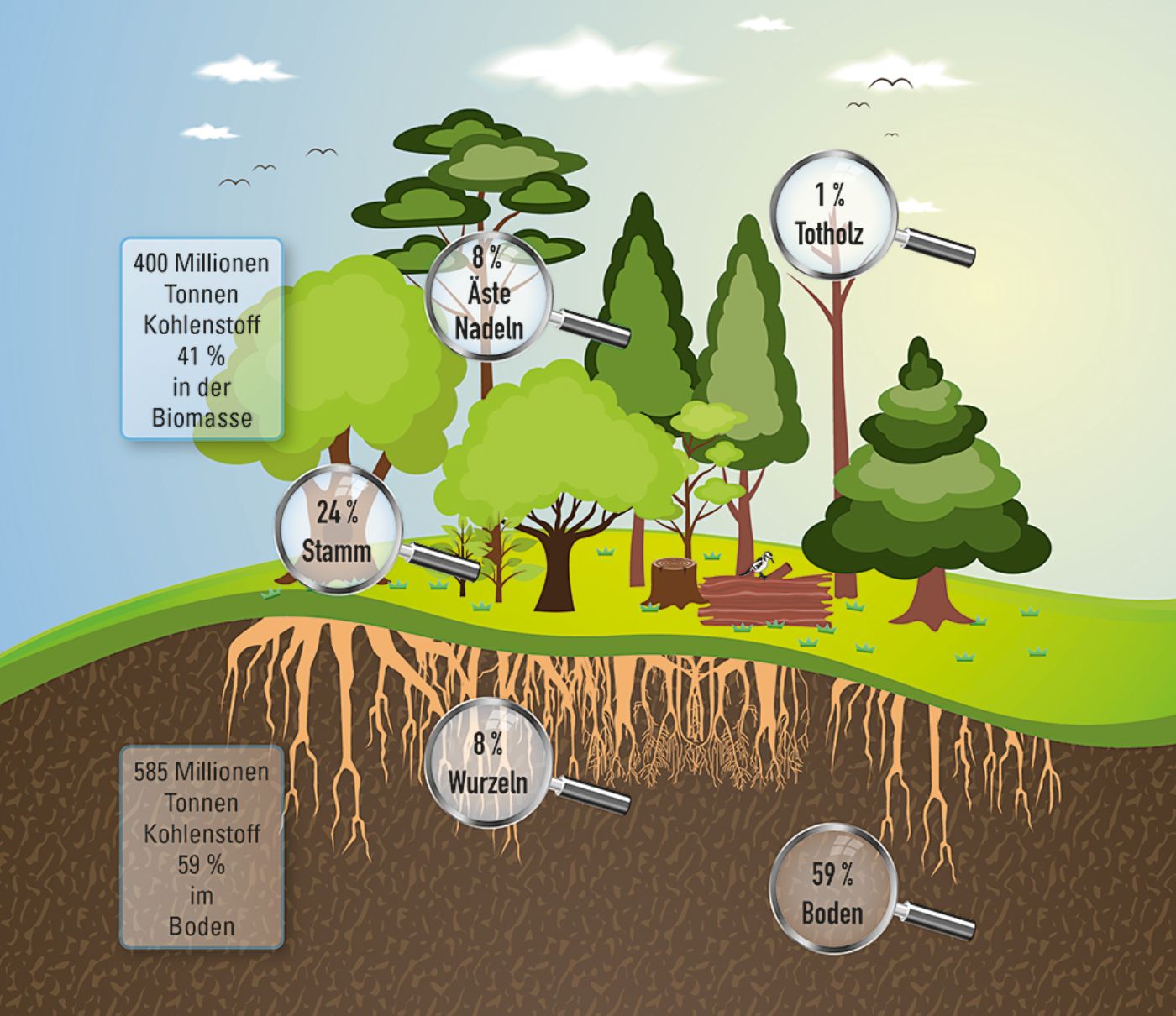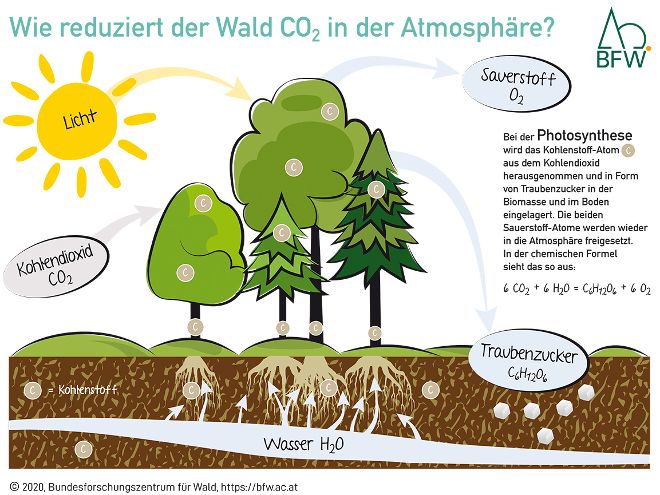Forests as protectors against climate change
Forests take up huge amounts of carbon. Sustainable forest management is the key to the reduction of CO2 emissions.
Climate miracle forest
Carbon (C) makes up about 50 percent of wood. It is derived from the atmosphere and is absorbed by the trees in the form of carbon dioxide (CO2). On an area of four million hectares (48 % of the Austrian territory) Austria’s forests store approximately 985 million tonnes of carbon in the biomass and in the soil. If dead trees are left in forests, their wood is decomposed by microorganisms and the carbon fixed in the wood is returned to the atmosphere.
Forest management improves this balance because by the use of long-lived wood products carbon fixed in harvested wood does not again enter the atmosphere. Furthermore, a species-rich forest with a great diversity of soil organisms promotes long-term carbon storage in the forest soil. The biodiversity in flora and fauna increases the forest’s stability and, as a consequence, its resilience in the event of natural disasters or pest infestation.

Using wood reduces carbon dioxide emissions
The CO2 storage capacity of a forest increases with its age; it is limited, however, as the risks of diseases, insect infestation and damage due to storm are rising as well. Trees die and break down and in this way again discharge CO2 into the atmosphere. Where wood is used for energy, as a fuel, the carbon dioxide is emitted into the atmosphere as well, whereas in a wood product remains fixed as long as the product is in use. For example, about 1,000 kilogrammes of carbon are fixed in the furniture of an average Austrian household.
However, the most significant contribution is that wood can replace other building materials and fuels. As the production, use and disposal of wooden materials generate lower amounts of CO2 emissions than the use and the production of, for example, concrete and steel, this is a way how considerable quantities of emissions can be avoided.
-

How does forest reduce CO2 in the atmosphere?
(in German only) -

Combating the climate crisis with managed forests
In our film with Klimajäger Andreas Jäger, we show you how the forest can help us get the climate back under control. We explain why heat and energy from wood is climate neutral, why sustainably managed forests play a big role in the fight against the climate crisis.
Duration: 6:31